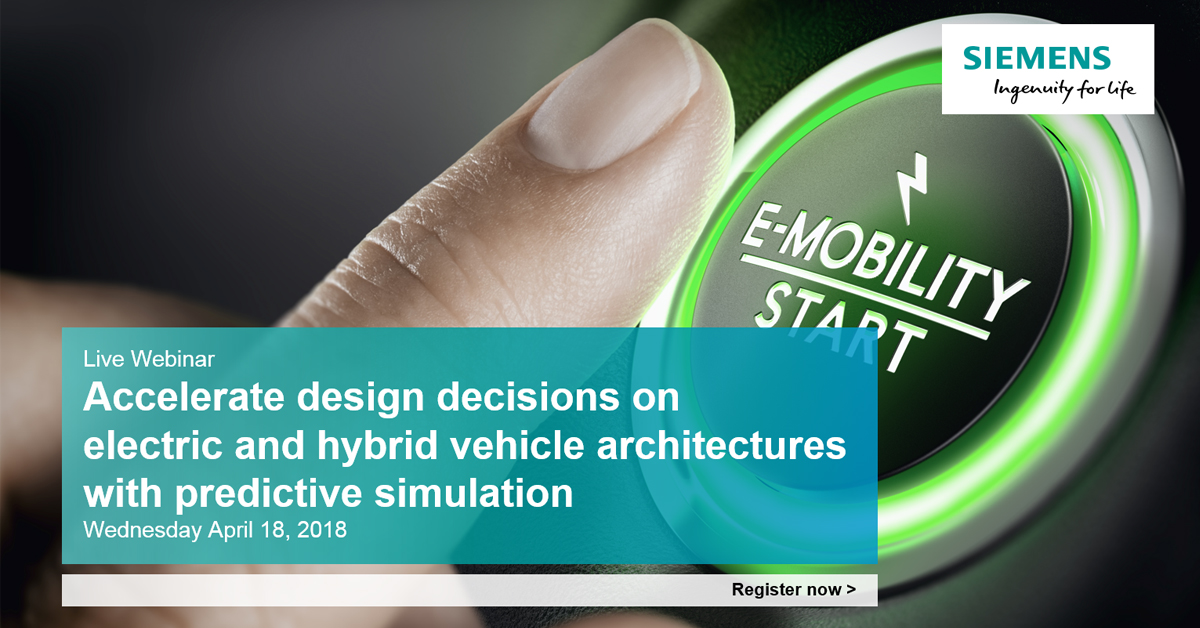Be the fittest for the electrification race

The global automotive and transportation industry is now embracing vehicle electrification. The latest announcement of Volkswagen to electrify all 12 brands by 2030 just confirmed this movement and set the pace. Pledging to have at least one electric version out of all 300 models is ambitious. Why? Technically speaking, this is something highly achievable – despite very challenging. The technologies are there, maybe needing some incremental innovations but not more. But what about costs and time-to-market that will end up being strong differentiators in the race of market shares?

Cost and time management can be achieved in many ways: streamlining on purchasing volumes and battery production, standardizing on production processes, industrializing manufacturing platforms, etc. But rationalizing the engineering process can also be a solid asset in the value creation chain of organizations. The use of simulation tools to investigate on innovations and new vehicle architectures is now established within R&D and simulation departments. But pushing this to the next level and making it part of the global engineering process to support the frontloading of design decisions in every departments can make a real difference in terms of costs and time savings.
 Today, the use of simulation models remains cluttered in very specific departments and accessible to simulation experts. This enable a better and faster understanding of systems behaviors, but the use remains very specific to small individual groups. The complexity of developing electrified powertrains and vehicles require a strong collaboration with many engineering departments on many aspects, and simulation is one of them. Innovation requires to overcome complexity – complexity from processes used to create these products, and complexity in the interactions between all the people involved in developing and delivering these products. Simulation should be an intricate part of engineering and should serve only one purpose: facilitating information sharing and accelerating design decisions based on predictable results that can be accessible to a wide range of user profiles, from experts to analysts.
Today, the use of simulation models remains cluttered in very specific departments and accessible to simulation experts. This enable a better and faster understanding of systems behaviors, but the use remains very specific to small individual groups. The complexity of developing electrified powertrains and vehicles require a strong collaboration with many engineering departments on many aspects, and simulation is one of them. Innovation requires to overcome complexity – complexity from processes used to create these products, and complexity in the interactions between all the people involved in developing and delivering these products. Simulation should be an intricate part of engineering and should serve only one purpose: facilitating information sharing and accelerating design decisions based on predictable results that can be accessible to a wide range of user profiles, from experts to analysts.
The implementation of a global, scalable simulation “factory” at enterprise level that makes complex simulation capabilities available to non-experts, and that enables to share, capitalize and reuse models for system integration, is definitely a key solution to address the electrification engineering and business challenges. At Siemens PLM Software, we think that empowering vehicle architects, vehicle project managers, analysts and subsystem specialists in addition to simulation experts is the next step toward increased process efficiency.
Does that ring a bell? If you want to know more, watch our on-demand webinar that introduces and details further on these topics.
 Fred Ross and Thomas Desbarats, automotive industry experts at Siemens PLM Software, will introduce the major automotive industry trends, the digital twin approach, and detail how Simcenter allows to make a disruptive move on simulation processes. By enabling the creation and deployment of a comprehensive predictive simulation platform, they’ll explain with concrete case that our solutions help engineering departments to save time in performance evaluation of any new electric, hybrid or conventional vehicle, from architecture design to test phase, and thus speed up the decision-making process.
Fred Ross and Thomas Desbarats, automotive industry experts at Siemens PLM Software, will introduce the major automotive industry trends, the digital twin approach, and detail how Simcenter allows to make a disruptive move on simulation processes. By enabling the creation and deployment of a comprehensive predictive simulation platform, they’ll explain with concrete case that our solutions help engineering departments to save time in performance evaluation of any new electric, hybrid or conventional vehicle, from architecture design to test phase, and thus speed up the decision-making process.


